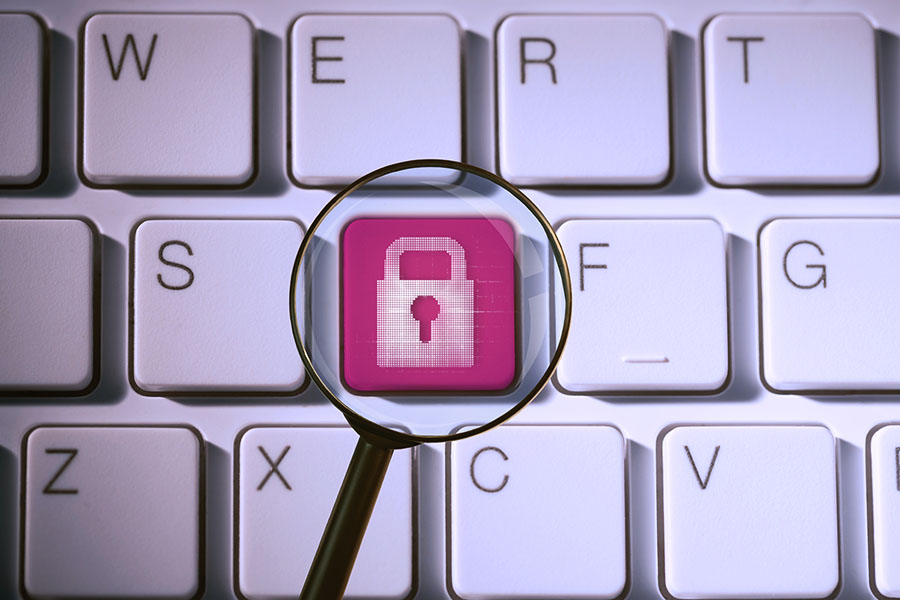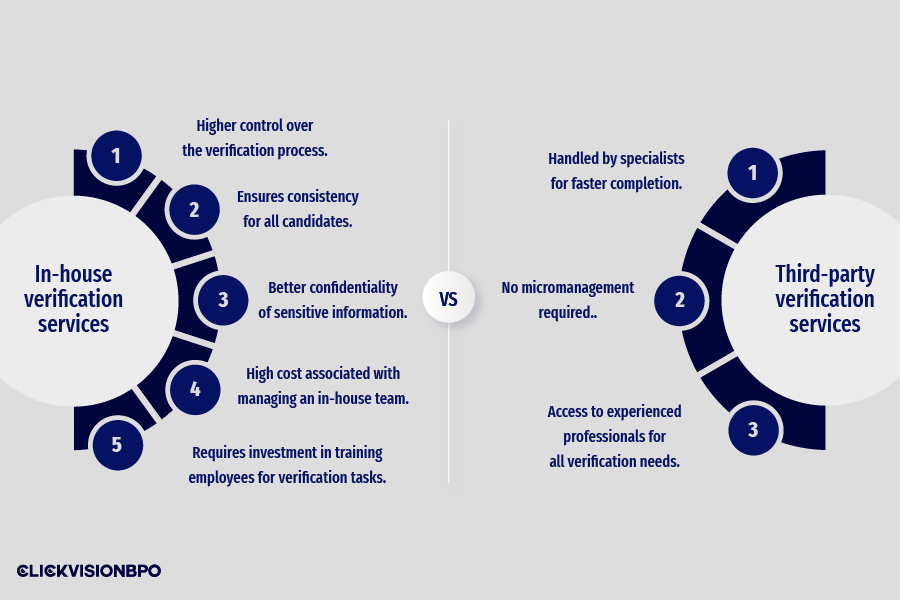Nowadays, with technological advancement, medical credential and qualification forgery occur more frequently than commonly believed. Consequently, primary source verification is essential for keeping healthcare facilities compliant and protecting all sides. So, what is primary source verification, and why is it so important?
The primary source verification is known for its complexity. It requires time, expertise and patience. Consequently, many healthcare providers decide to outsource the PSV process and leave this critical role in credentialing to experts like us.
Now, let us explain in detail how we do the primary source verification and ensure the accuracy and legitimacy of the provider’s credentials.
Understanding Primary Source Verification (PSV)
What is primary source verification? Primary source verification, or PSV in short, is a crucial process in provider credentialing. With a PSV, an accredited organization investigates the legal ability of an individual to practice medicine, typically by contacting the credentials issuing authority, also called the primary source.
During the primary source verification process, the credentials, qualifications, licenses and certifications are checked and verified. In short, we check whether the individual providers have everything required to work in a healthcare facility according to the government and local regulations and whether their documentation is authentic and accurate. Even the work experience of the applicant is verified.
A good industry practice is to check the credentials of a healthcare provider during the hiring process, when it is time to sign a new contract, and when the individual renews their credentials or obtains a new one.
The importance of verification
A detailed and high-quality primary source verification process can fight against healthcare providers’ growing distribution of misleading or false credentials. Unfortunately, this happens quite often. The US Attorney’s Office recently revealed a scheme that gave out more than 7,600 fake nursing diplomas.
Hiring primary source verification experts with years of experience will protect your healthcare facility from documentation fraud scandals and malpractice liability. At the same time, you will be providing your patients with proper care. A good PSV will save the reputation of your healthcare organization.

Source: freepik.com / Photo Contributor: creativeart
Types of Information Verified
Practicing patient care requires medical professionals to always have a valid license and certification. The primary source verification process provides extensive research to ensure the people whom the healthcare facility hires have all the legal documents to practice medicine. The key pieces of information that PSV checks include:
- State medical licenses
- State DEA certificates
- Board certifications
- Formal education diplomas
- Training
- Residency programs
- Professional experience
- Hospital affiliations
- Continuing medical education when needed
Per request of the healthcare facility, the PSV can also include additional verification. For example, references, proof of insurance and liability history, sanctions and exclusions by the board, criminal record, financial documents and identification verification.
PSV Process Overview
To better understand primary source verification, you should know how the process works. If you decide to collaborate with us and let our experts do the verification for you, here is what you can expect.
Verification process
First and foremost, you must provide us with the name of the physician or practitioner and the credentials they provided when applying for a position in your facility. An important step in primary source verification is getting consent from the practitioner to conduct the verification legally.
Then, we identify what part of all the information you provided us needs to be verified. Typically, that includes educational qualifications, licensure and certifications.
Considering the data we have, we start an assessment and look for the best method of verification. In certain situations, that might be calling the facility or using primary source verification online – if applicable.
All of our attempts to get in touch with the primary source must be documented, whether they are successful or not. If the first attempt is unsuccessful, we must do as many follow-ups as needed based on the facility’s standard operating procedures.
When we finish the verification, we prepare a report with a detailed overview of all the steps we took and the results we got. One of the most important things that the documentation contains is information on whether the accreditation of the physician or practitioner is genuine.
Documentation requirements
A well-documented primary source verification when direct contact via a phone call should include details such as:
- Name of the organization contacted.
- Date and person contacted.
- Questions asked and responses received.
- A person who was collecting the verification information.
- The signature and date when the verification was concluded.
Importance of PSV in Credentialing
Primary source verification improves the medical credentialing process. Before enrolling a practitioner or physician, the PSV ensures accuracy and mitigates the risk of fraud or credential forgery.
In addition, PSV is a mandatory process required by regulatory bodies and accrediting agencies. When a physician or a medical practitioner has adequate certifications and licenses, compliance with the standards is ensured.
Consequently, your healthcare facility will reduce the liability. This is because you are certain that you are hiring individuals with the necessary qualifications to perform their duties ethically and professionally.
Lastly, the primary source verification process is just as important for the patients and the public as it is for healthcare facilities. Thanks to the PSV process, patients can be sure about the competency of the healthcare providers, which increases their trust and leads them to believe they will get quality care.
PSV Methods and Sources
There are several methods for proving the authenticity of the candidate’s credentials. We can collect the needed information by establishing direct contact with the primary source and using digital verification platforms. Unfortunately, not all certification bodies and boards have electronic databases for a manual license search.
Several methods can be used when doing primary source verification through direct contact, from phone calls and emails to fax and other written communication sources. The most suitable communication channel depends on the availability of the primary source.
The process must be adequately documented, no matter the method used to provide the primary source verification. For instance, if your healthcare facility undergoes a regulatory survey, you might be asked to provide them with proof of a performed verification.
What is a primary source?
The primary source is actually the body that issued the certification, license or educational diploma. For example, if you have a practitioner applying for a position at your healthcare facility who has graduated from Stanford University, the primary source will be the university itself.
Some examples of primary sources include federal and state government agencies, educational institutions, hospitals and professional associations. In cases where letters of recommendation must be verified, the individual who has written them is considered a primary source.
In-house primary source verification vs. third-party verification services
Regarding the people who are responsible for the primary source verifications, as a healthcare facility, you can decide to do the process in-house or hire a third-party verification service provider like us. To assist you in making an informed decision about your healthcare organization, we compiled a quick overview of the pros and cons of both options.
The in-house verification team of a healthcare organization can be either a part of human resources or an independent department. The pros of doing the primary source verification process in-house include higher control, consistency for all candidates and better confidentiality.
However, managing an in-house verification team comes with a high cost. Your healthcare organization should invest resources in training employees to do the verification.
On the other hand, with third-party verification services, you don’t have to micromanage every step of the process. You will have access to a primary source verification team that works efficiently.
Generally looking, as third-party verification services, we tend to finish the whole process faster because of the resources and experience we have at CLICKVISION BPO. We are specialized to handle every verification case, from the ones that require domestic verification, to the more complex foreign credentials.

Designated Equivalent Sources and their importance in PSV
Designated Equivalent Sources, or DES, in short, are agencies that have credential information about professionals in the medical industry. The information DES holds is equivalent to the one you can get from the primary sources. Some of the most popular and relevant Designated Equivalent Sources include:
| Designated Equivalent Sources | Best use for verifying |
| The American Medical Association Physician Professional Data | Current and historical physician records of MDs and DOs from the US, Puerto Rico, Virgin Islands, and some Pacific Islands |
| The American Board of Medical Specialties | Physician’s board certification status |
| The Educational Commission for Foreign Medical Graduates | Non-US physicians and professionals who graduated outside of the US |
| The American Osteopathic Association Physician Database | Physicians accredited by the AOA |
| The Federation of State Medical Boards | Physicians medical license |
| The American Academy of Physician Assistants Profile | Physician assistant education |
| National Commission on Certification of Physician Assistants | Board certification and disciplinary actions from the NCCPA since 2012 |
| The National Board of Physicians and Surgeons | Physician education and training |
Challenges in PSV
Although, in theory, the primary source verification process seems simple, the reality is different. The first challenge is that the whole process takes time. Verifying each credential or information requires dedicated resources like personnel, time, and finances.
In rare cases, the primary source verification can take up to 15 minutes if the issuing body can be reached via phone call. However, most of the primary verification processes might last up to 90 days because of the delays in response from primary sources.
Recently, another common challenge with primary source verification has been the inability to get the verification by contacting the issuing body. The primary source no longer operates, and no one can verify the credentials. If that happens, we have to move on to looking for secondary sources, which can be complex and time-consuming.
With globalization and easy access to information through the Internet, many healthcare professionals have gained their certifications abroad. While the verification process can go smoothly for credentials gained in some institutions abroad, there are many situations where the issuing body is hard to reach and communication problems.
Compliance Considerations
The primary source verification must be done in compliance with the latest regulatory requirements. Most of the regulations are included in the following documents:
- Human Resources chapter of the accreditation manuals, more specifically HR.01.01.01.
- The Medical Staff chapter in the Hospital and Critical Access Hospital manuals, MS.06.01.03 EP 6 and MS.06.01.05 EP 2.
According to HR.01.01.01, all healthcare organizations must verify all the documents provided by the applicant. Most importantly, they verify their educational background and experience.
The MS.06.01.03 explains the requirements for medical credentialing. In short, the standards require a reliable and consistent verification process for all applications. The MS.06.01.05 standard focuses on the obligation of all medical practitioners and other healthcare providers to have current licenses, certifications, and registrations.
At CLICKVISION BPO, we constantly follow the changes in the law and requirements regarding verification. You can rest assured that the primary source verification we will do for your healthcare facility will be done according to the latest industry regulations.

Source: freepik.com
Conclusion
What is primary source verification? Understanding it will help your healthcare facility learn more about the importance of the process and assist you in making a decision whether you will do it in-house or hire a third party.
If you are interested in outsourcing the primary source verification, our CLICKVISION experts are here to simplify the process. We will bring accurate results in a timely manner!

With a strong background in the marketing industry and healthcare leadership roles, Filip is responsible for CLICKVISIONBPO’s sales strategies and onboarding new clients. With a passion for sharing insights gained from his experience, he also shares valuable knowledge through industry related articles.
